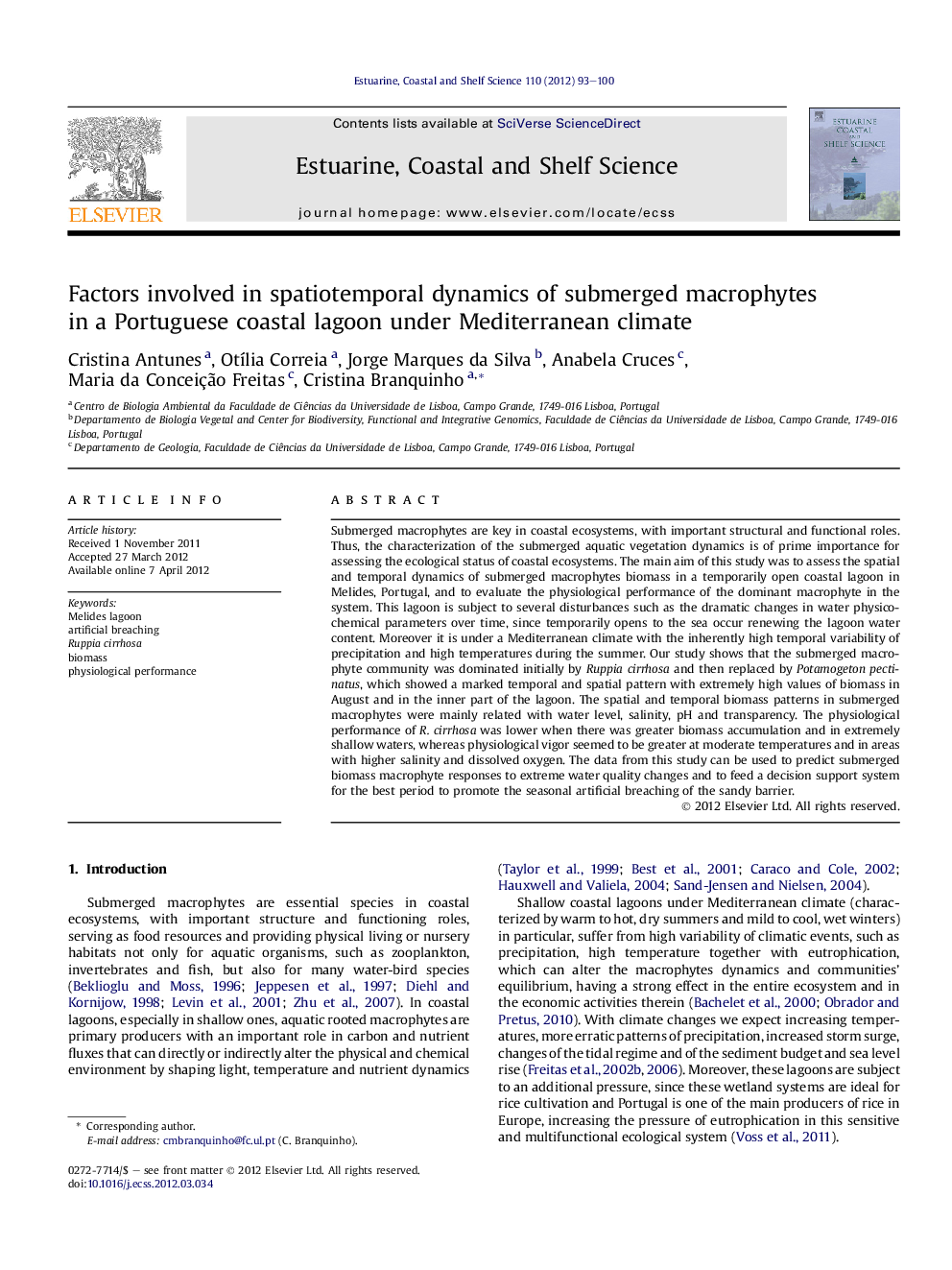| Article ID | Journal | Published Year | Pages | File Type |
|---|---|---|---|---|
| 4540117 | Estuarine, Coastal and Shelf Science | 2012 | 8 Pages |
Submerged macrophytes are key in coastal ecosystems, with important structural and functional roles. Thus, the characterization of the submerged aquatic vegetation dynamics is of prime importance for assessing the ecological status of coastal ecosystems. The main aim of this study was to assess the spatial and temporal dynamics of submerged macrophytes biomass in a temporarily open coastal lagoon in Melides, Portugal, and to evaluate the physiological performance of the dominant macrophyte in the system. This lagoon is subject to several disturbances such as the dramatic changes in water physicochemical parameters over time, since temporarily opens to the sea occur renewing the lagoon water content. Moreover it is under a Mediterranean climate with the inherently high temporal variability of precipitation and high temperatures during the summer. Our study shows that the submerged macrophyte community was dominated initially by Ruppia cirrhosa and then replaced by Potamogeton pectinatus, which showed a marked temporal and spatial pattern with extremely high values of biomass in August and in the inner part of the lagoon. The spatial and temporal biomass patterns in submerged macrophytes were mainly related with water level, salinity, pH and transparency. The physiological performance of R. cirrhosa was lower when there was greater biomass accumulation and in extremely shallow waters, whereas physiological vigor seemed to be greater at moderate temperatures and in areas with higher salinity and dissolved oxygen. The data from this study can be used to predict submerged biomass macrophyte responses to extreme water quality changes and to feed a decision support system for the best period to promote the seasonal artificial breaching of the sandy barrier.
